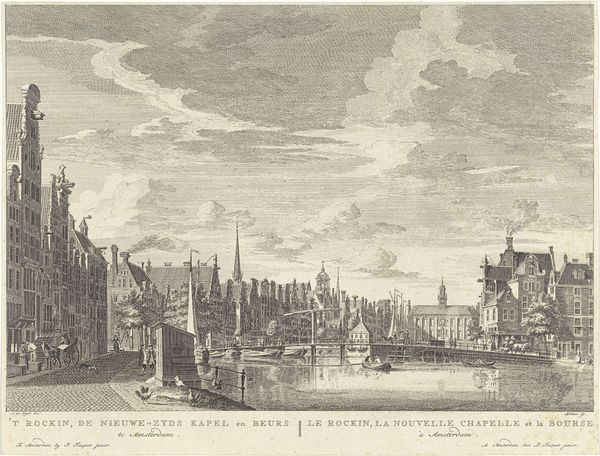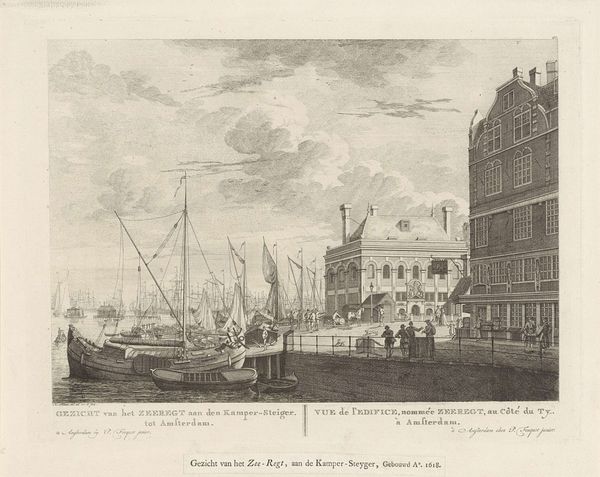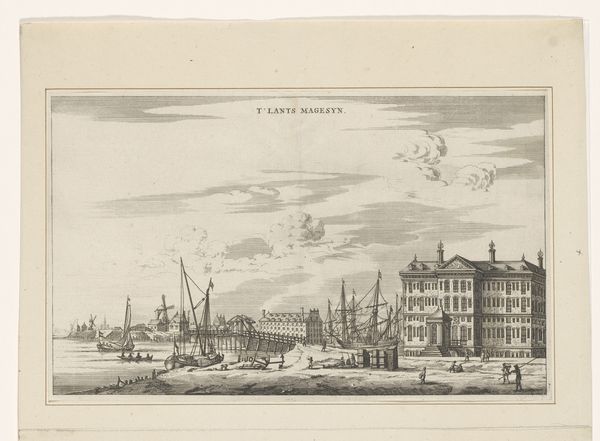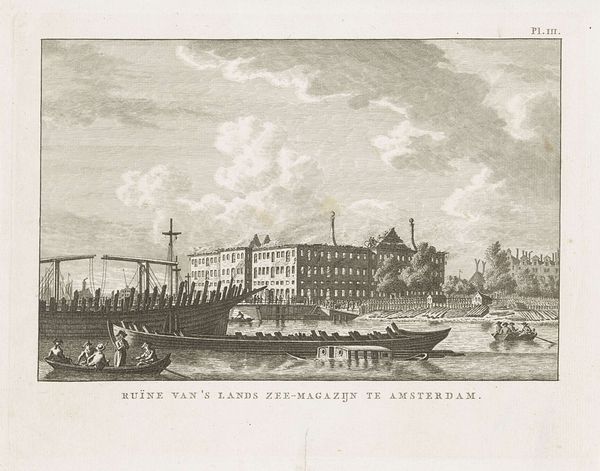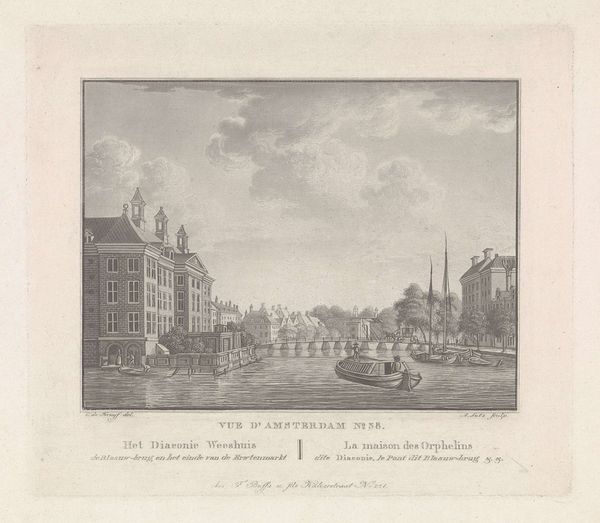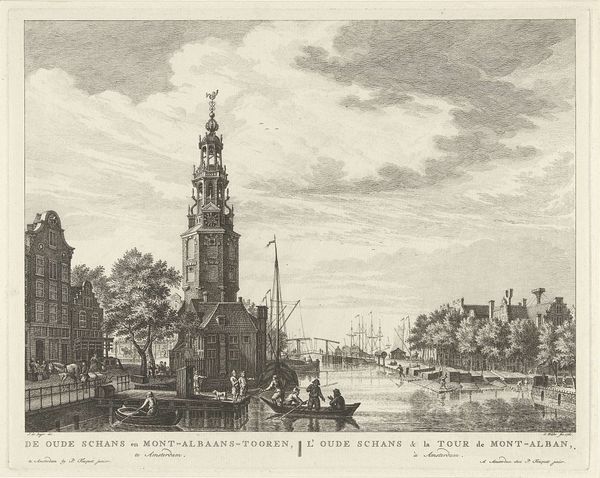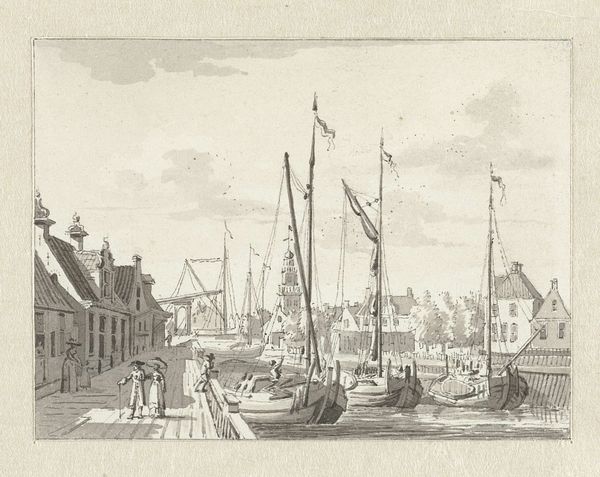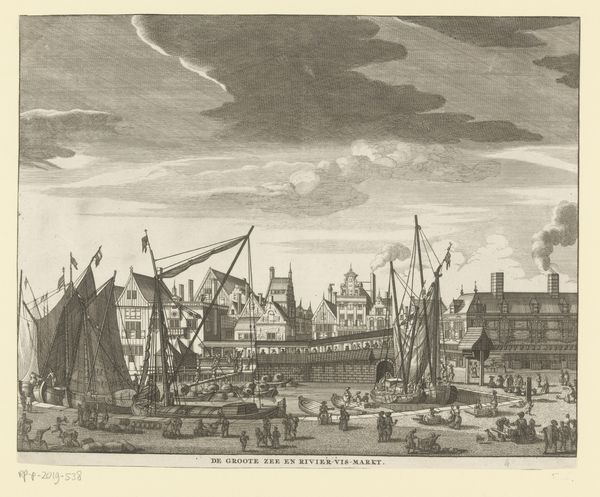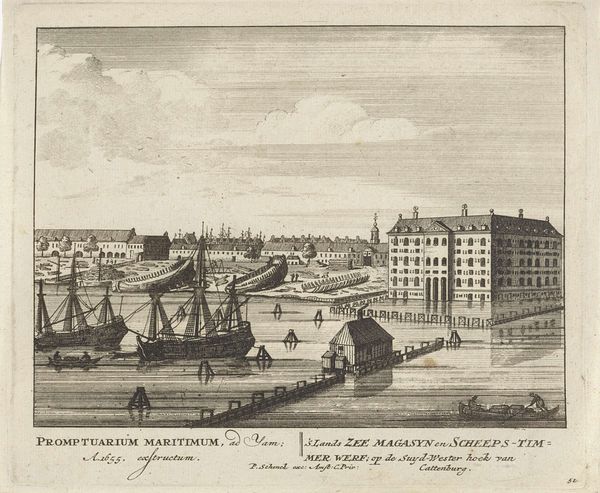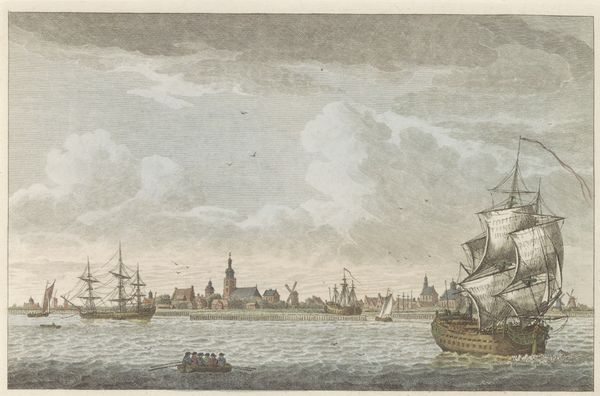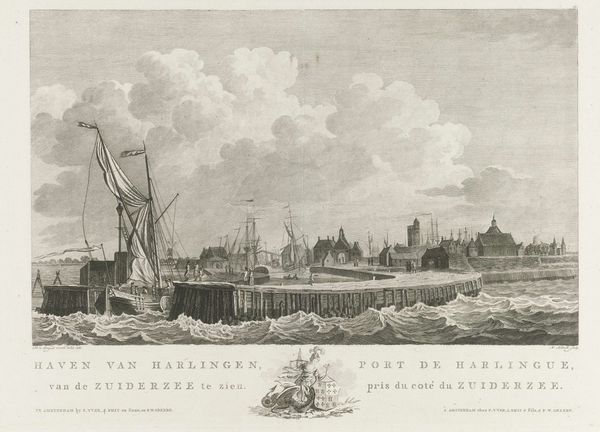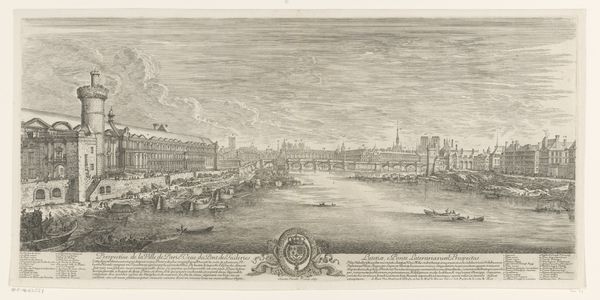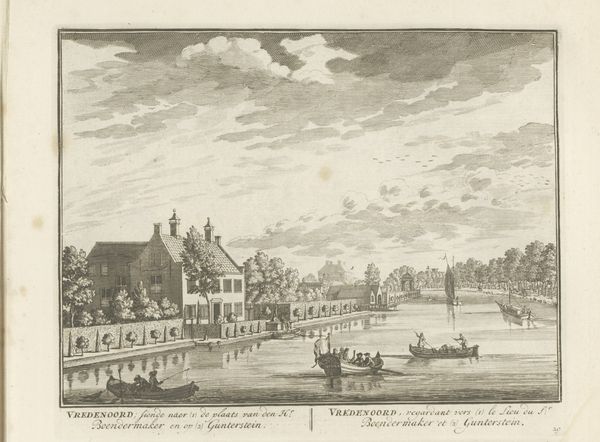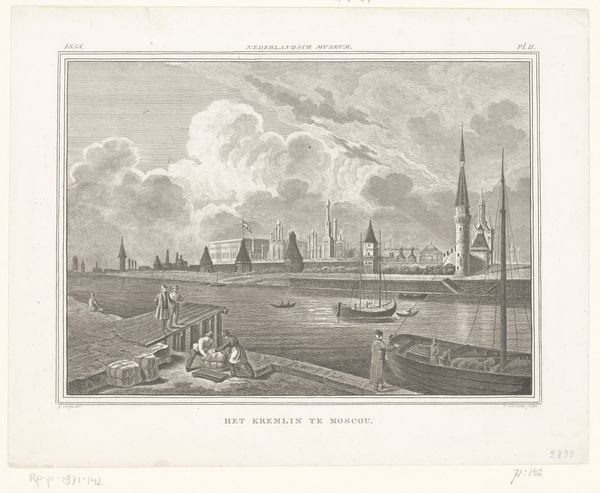
Gezicht op de Theems en de tuin van Somerset House te Londen 1753
0:00
0:00
casparjacobszphilips
Rijksmuseum
Dimensions: height 178 mm, width 438 mm
Copyright: Rijks Museum: Open Domain
Curator: This engraving by Caspar Jacobsz. Philips, created in 1753, offers us a "View of the Thames and the garden of Somerset House in London," currently residing here at the Rijksmuseum. Editor: What strikes me immediately is the sharp contrast, almost theatrical. It’s very composed; you have the light and dark, a city bustling, and people milling around. A vibrant representation of 18th century London. Curator: Absolutely. Philips was meticulously documenting a very specific moment in London's development, portraying Somerset House, once a royal residence, from a unique perspective, allowing for a glimpse of London from the gardens down to the bustling Thames. Editor: Yes, and consider the politics embedded in that point of view. Access and representation, particularly of private or royal property turned to more public use. The image becomes part of a visual rhetoric of ownership, power, and access in the changing social structure of the time. Who has permission to stand where and create this view for circulation? Curator: Good point! And what Philips captured, technically through incredibly fine lines, allows us to see not only the architecture but also the industrial activity on the Thames – the boats, suggesting trade and London's role as a powerful center of commerce. His deliberate choice of panoramic view emphasizes a broad scope of influence and power, of this landscape and kingdom. Editor: Which also implicitly acknowledges the lives tied to that power. Look closely: do those people working on the Thames share the same privileges or representation in larger society as those enjoying the garden of Somerset House? Consider whose stories are prioritized, and who gets erased, even in a "neutral" cityscape view. It subtly raises essential questions about social disparities. Curator: I appreciate your view. What do you make of its historical significance? For someone who wasn't around at that period to see London, what story does it tell you now? Editor: Beyond offering a physical layout, the print reveals to us a carefully constructed vision of 18th-century London, hinting at themes of industrial growth, royal authority, class disparities and expanding urban environments. Curator: For me, stepping back, what I see is a snapshot of the aspirations and social order of the 1750's, beautifully rendered through the eyes, and skilled hands, of Philips. Editor: And for me, art's job is not just to hold up a mirror but to compel us to ask, Whose reflection is this and who made the glass?
Comments
No comments
Be the first to comment and join the conversation on the ultimate creative platform.
